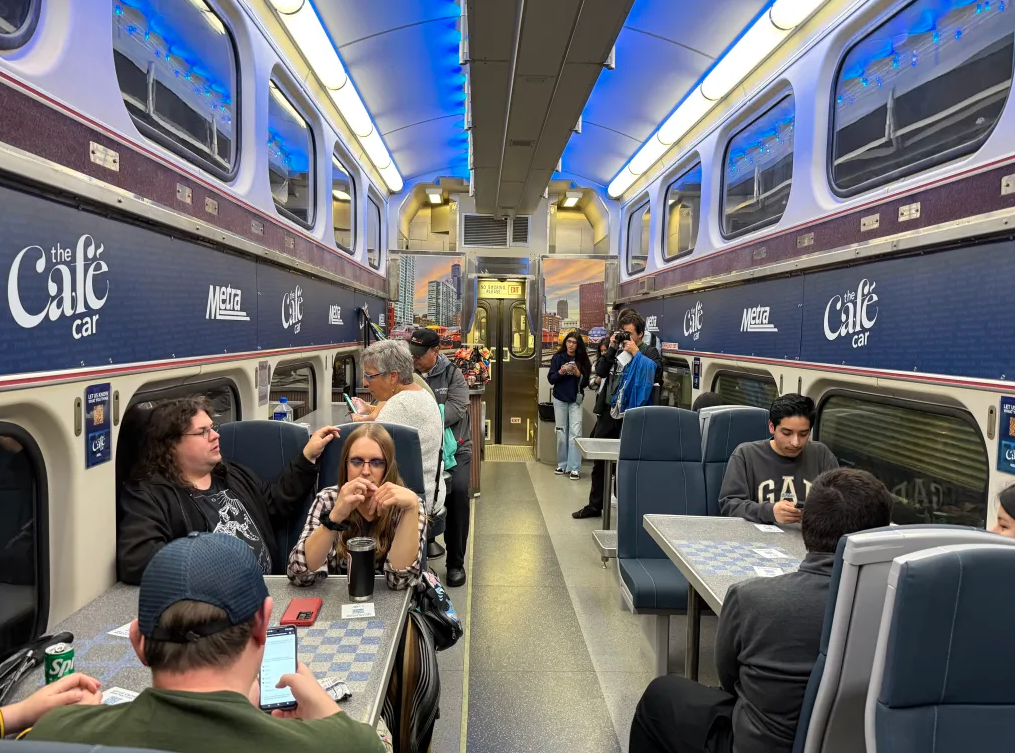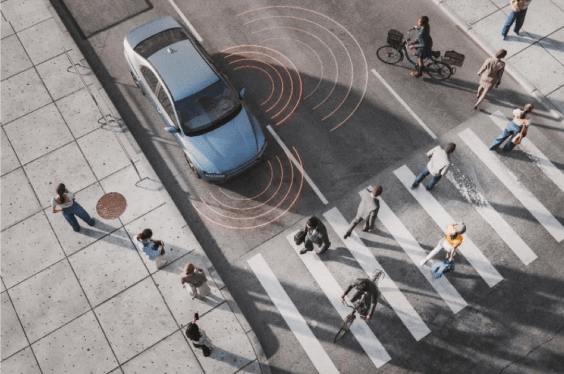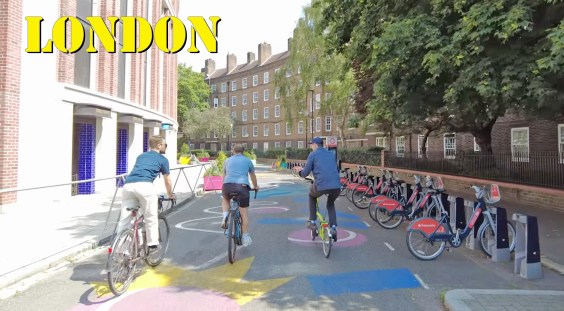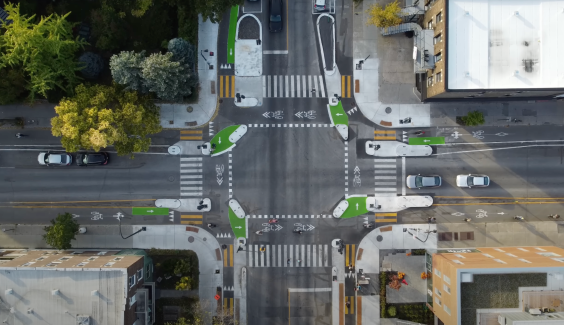 University Avenue in Palo Alto. Flickr photo: richardmasoner
University Avenue in Palo Alto. Flickr photo: richardmasonerIn the past few weeks, Stanford University students have built support for a proposal to reduce parking, widen sidewalks, and eventually close eight blocks of University Avenue in Palo Alto to motor vehicles. The Palo Alto Pedestrian Mall (PAPM) started out as an assignment in a "Creating Infectious Action" class at the design school at Stanford and has since garnered support among transportation committee members of the city council and businesses along the avenue, many of them restaurants that want to take advantage of extra sidewalk seating.
Amrita Mahale, a masters student in engineering at Stanford, explained that their assignment in class was to create a social movement that would reduce gas consumption, and after looking at traffic mitigation around campus, she and her fellow students thought that University Avenue would be more visible and significant. They started a Facebook page, which she was proud to note had over 1300 members in less than two weeks, canvassed businesses along the street to build support among a key constituency, conducted informal surveys of street users to measure their response ("all positive" she said), and enlisted Palo Alto's former mayor and current councilmember, Yoriko Kishimoto, who has become a champion for the proposal.
"Now I think we have enough momentum for the city to take us seriously," said Mahale.
Kishimoto said the project resembles a trial closure that she enabled in 2007 while still mayor, when the city shut the avenue down for one night to create pedestrian promenade and program events. "Overall it was a success and a magical evening that showed the possibilities," she said. "But we also made some mistakes that we need to learn from, like merchant outreach."
 University Avenue between Cowper and High Street, with parralel one-way pairs in red.
University Avenue between Cowper and High Street, with parralel one-way pairs in red.The students envision PAPM starting slowly with the removal of a
portion of the 120 spaces on University between High Street and Cowper
Street, widening sidewalks with provisional treatments, and testing
monthly or weekly street closures for events. If University were
closed permanently, the students want to see adjacent parallel streets
convert into one-way pairs to deal with possible congestion.
Mahale and her classmates said they had pitched the idea up and down the street and over a dozen businesses had already agreed to put support stickers in their windows. She explained that restaurants in particular understood the benefit of having more pedestrians using the space and sitting outside to eat.
Cafe 220 Manager Yusuf Tosun was hopeful the closure
would bring more business. "I think its gonna be nice to not have car
traffic and to allow restaurant owners to have a patio outside,
especially with the economy so bad. People like the idea, especially
restaurant owners."
Mahale also highlighted the problem of employees using the parking spaces on University in front of the businesses where they worked. She said they could bypass the two-hour parking time limit on the street by moving between two zones with different restrictions.
"We saw several employees leave customers to move their cars," she explained. "We asked the employees about it and they said, 'yes it is a problem, but the customers understand.'"
Not everyone would be happy with a complete closure, though incremental steps like replacing parking with wider sidewalks seem less controversial, particularly given the many parking lots and garages just off University.
James Whitman, manager of the President Hotel Apartments, said he couldn't speak for the entire building, but he liked the idea of phasing in changes. "I definitely do support what they're trying do, but if that isn't possible I can see a compromise, the possibility of taking parking spaces out. It's not an all or nothing."
Kishimoto said the most likely solution would be incremental. "I don't think Palo Alto is just ready to close University down. I think there's definitely going to be concerns about making a permanent closure... many of the downtown leaders are open to looking at removing some of the parking, using that parking for outdoor dining, temporary bike parking."
After trying out small changes to parking, she suggested, then they could experiment with routine closures. "Maybe once a month or once a week you close University. Maybe Friday night and keep it closed for the Farmer's market on Saturday morning."
"Palo Alto downtown is already a major hotspot on the Peninsula and I think this could make it more so."





